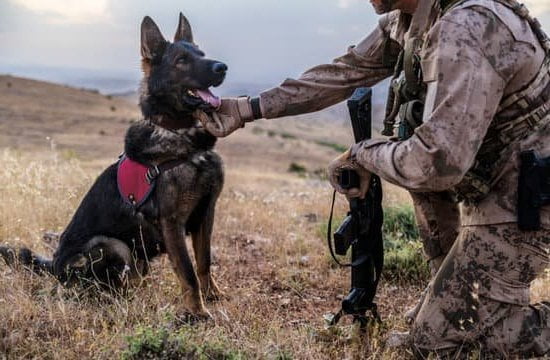Have you recently adopted a rescue dog and are wondering how to train them? Training rescue dogs is essential for helping them adjust to their new home and become well-behaved pets.
The significance of training rescue dogs cannot be overstated, as it not only provides them with the necessary skills to thrive in their new environment but also helps strengthen the bond between pet and owner.
In this article, we will explore the basics of training rescue dogs, building trust with your new pet, using positive reinforcement methods, addressing behavioral challenges, socialization and obedience training, specialized training considerations for traumatized rescue dogs, and the importance of continued support in their training journey.
When it comes to training rescue dogs, understanding the importance of this process is crucial. From teaching them basic commands to addressing any behavioral issues they may have, training plays a vital role in helping rescue dogs feel safe and secure in their new environment. It also sets the foundation for a strong and trusting relationship between the dog and their owner.
In addition to learning fundamental training techniques and commands, building trust with your rescue dog is equally important. This involves patience, consistency, and providing a supportive and nurturing environment for your pet. By establishing trust through training, you can help your rescue dog feel more comfortable in their new home and facilitate a smoother transition into their new life.
The Basics of Training Rescue Dogs
When it comes to training rescue dogs, there are some basic techniques and commands that are essential for helping them adjust to their new environment and become well-behaved pets. One of the first and most important steps in training a rescue dog is to establish a routine.
This means setting feeding times, walking schedules, bathroom breaks, and playtime at consistent intervals throughout the day. Consistency in routine helps create stability for the rescue dog as they acclimate to their new home.
Another fundamental aspect of training rescue dogs is teaching them basic commands such as sit, stay, come, and heel. These commands not only improve their behavior but also enhance their safety and make it easier for them to be integrated into social settings. Positive reinforcement is key when training rescue dogs, using treats, toys, or praise to reinforce good behavior. It’s important to be patient with these dogs as they may have experienced trauma or neglect in the past.
In addition to basic commands and positive reinforcement training methods, it’s crucial to provide mental stimulation for rescue dogs through interactive games, puzzle toys, and enrichment activities. Mental stimulation can alleviate stress and anxiety while boosting their cognitive abilities. By implementing these fundamental training techniques, you can help rescue dogs adapt to their new environment more effectively.
| Training Techniques | Description |
|---|---|
| Establishing Routine | Setting consistent feeding times, walks, bathroom breaks, and playtime |
| Basic Commands | Teaching sit, stay, come, and heel commands using positive reinforcement |
| Mental Stimulation | Providing interactive games, puzzle toys, and enrichment activities for cognitive stimulation |
Building Trust With Your Rescue Dog
Establishing trust with a rescue dog is crucial for their overall well-being and successful training. Many rescue dogs come from uncertain or traumatic backgrounds, so it’s important to approach training with patience, understanding, and a willingness to build a strong bond. Building trust with a rescue dog starts with creating a safe and comforting environment for them to feel secure in their new home.
One of the first steps in building trust with your rescue dog is to give them space and time to adjust. It’s essential to understand that the transition can be overwhelming for them, so patience is key. Try not to overwhelm them with too much too soon, and allow them to explore their new surroundings at their own pace. Additionally, providing consistent routines and positive interactions will help your rescue dog feel more secure in their new environment.
When it comes to training, using positive reinforcement techniques can significantly aid in building trust with your rescue dog. Reward-based training methods such as treats, praise, and play can help create a positive association with training sessions and help solidify the bond between you and your rescue dog. These methods can also help boost their confidence and show them that they are loved and cared for.
It’s crucial to remember that every rescue dog is an individual with unique needs and experiences. While building trust can take time, patience, and consistency, the rewards of a strong bond built on trust will greatly benefit both you and your rescue dog in the long run.
| Training Technique | Details |
|---|---|
| Positive Reinforcement | Reward-based training methods like treats, praise, and play |
| Patience | Allowing the rescue dog time to adjust at their own pace |
| Consistent Routines | Providing predictability through daily routines |
Positive Reinforcement Training Methods
When it comes to training rescue dogs, positive reinforcement methods are often the most effective. Using positive reinforcement involves rewarding good behavior with treats, toys, or praise, which encourages the dog to repeat that behavior in the future. Here are some positive reinforcement training methods that can be beneficial for training rescue dogs:
- Clicker Training: Clicker training is a popular form of positive reinforcement that uses a clicking sound to mark the moment when a dog performs the desired behavior. This method allows for precise timing and clear communication with the dog.
- Treat-Based Training: Using high-value treats as a reward for good behavior can be an excellent way to motivate and encourage rescue dogs during training sessions. It is important to use treats that are irresistible to the dog and reserve them exclusively for training purposes.
- Verbal Praise and Affection: In addition to using treats, verbal praise and affection can also be powerful forms of positive reinforcement. Rescue dogs often crave love and approval, so offering verbal praise and physical affection when they display good behavior can be highly effective in their training.
- Consistency and Patience: Consistency is key when using positive reinforcement training methods with rescue dogs. It is essential to be patient and consistent with your rewards and expectations during training sessions, as this will help build trust and understanding between you and your new pet.
By utilizing these positive reinforcement methods, you can create a strong foundation for training rescue dogs while promoting a bond based on trust and mutual respect. With patience, consistency, and plenty of love, you can effectively train your rescue dog to become a well-behaved and happy companion in their new home.
Addressing Behavioral Challenges in Rescue Dogs
Rescue dogs often come with a unique set of behavioral challenges due to their past experiences and trauma. It’s important for new owners to be patient and understanding as they work to train their rescue dog and help them adjust to their new environment. Understanding how to address these challenges through training can make a significant difference in the overall well-being of the dog.
Identifying Common Behavioral Issues
Rescue dogs may exhibit various behavioral issues such as separation anxiety, fearfulness, aggression, or excessive barking. It’s crucial for owners to understand that these behaviors are often rooted in the dog’s previous experiences and may require specialized attention during training. By recognizing these common issues, owners can take the necessary steps to address and correct them through proper training techniques.
Strategies for Addressing Behavioral Challenges
One effective approach for addressing behavioral challenges in rescue dogs is by implementing consistent training routines that focus on positive reinforcement. Establishing clear boundaries, providing mental stimulation through interactive toys, and offering a secure environment can help alleviate some of the anxieties and fears associated with behavioral issues. In addition, seeking professional guidance from a certified dog trainer or behaviorist can offer valuable insights and support in addressing specific behavioral concerns.
Implementing Positive Reinforcement Training
Positive reinforcement is key when addressing behavioral challenges in rescue dogs. Reward-based training methods that involve treats, praise, and encouragement can effectively encourage desirable behaviors while discouraging negative ones. By consistently rewarding positive behaviors, rescue dogs can learn to feel more secure in their new home and build trust with their owners.
Utilizing positive reinforcement methods provides an opportunity for rescue dogs to develop confidence and overcome their behavioral challenges over time. Learning how to train rescue dogs using positive reinforcement techniques is essential for creating a supportive environment that promotes emotional healing and overall well-being for these special animals.
Socialization and Obedience Training
Why Socialization and Obedience Training Is Essential
Socialization and obedience training play a crucial role in helping rescue dogs adjust to their new environment. By introducing them to different experiences, people, and animals in a positive way, socialization helps prevent fear and aggression. Obedience training, on the other hand, teaches rescue dogs basic commands like sit, stay, and come, which are important for their safety and well-being.
Tips for Socializing Rescue Dogs
When it comes to socializing rescue dogs, it’s important to start with gradual exposure to new experiences. This could include taking them for walks in the park, visits to the pet store, or even introducing them to other pets in a controlled environment. Positive reinforcement during these experiences can help build their confidence and trust.
Obedience Training Techniques
Incorporating positive reinforcement techniques such as using treats or praise when the dog follows commands can make obedience training more effective. Consistency is key when teaching obedience commands, so it’s important for owners to practice these commands regularly with their rescue dogs. Additionally, enrolling them in obedience classes can provide structured training sessions and opportunities for socialization with other dogs.
By understanding how important socialization and obedience training are for rescue dogs, owners can help their pets become well-adjusted members of the family. With patience, consistency, and positive reinforcement methods, rescue dogs can thrive in their new homes.
Training Considerations for Special Cases and Traumatized Rescue Dogs
Rescue dogs may come from various backgrounds, including traumatic experiences, abuse, or neglect. As a result, they may have unique needs when it comes to training and socialization. Special care and consideration are required to help these dogs overcome their past and build trust with their new owners. Here are some important training considerations for special cases and traumatized rescue dogs:
1. Patience and Understanding: It’s crucial to approach training traumatized rescue dogs with patience and understanding. These dogs may be fearful, anxious, or exhibit other behavioral issues as a result of their past experiences. Training sessions should be conducted in a calm and reassuring manner, allowing the dog to gradually build confidence and trust.
2. Positive Reinforcement: Positive reinforcement is particularly effective when training traumatized rescue dogs. Reward-based methods that involve treats, praise, and encouragement can help these dogs feel more secure and motivated to learn new behaviors. By focusing on positive reinforcement, owners can create a supportive environment that helps the dog overcome its past trauma.
3. Additional Support: Traumatized rescue dogs may benefit from additional support in the form of professional trainers or behaviorists who specialize in working with fearful or anxious animals. Seeking the guidance of experts can provide valuable insights and strategies for addressing specific behavioral challenges. Additionally, owners can also consider enrolling their dog in specialized training classes tailored to the needs of traumatized rescue dogs.
By taking into account these training considerations for special cases and traumatized rescue dogs, owners can provide the necessary support for their new pet’s rehabilitation and integration into their home. With patience, understanding, and positive reinforcement, traumatized rescue dogs can overcome their past experiences and become well-adjusted pets in their new environment.
Continued Training and Support for Rescue Dogs
In conclusion, training rescue dogs is a crucial aspect of helping them adapt to their new homes and become well-adjusted pets. By understanding the basics of training, building trust, using positive reinforcement methods, addressing behavioral challenges, and incorporating socialization and obedience training, owners can set their rescue dogs up for success. However, it’s important to remember that training is an ongoing process, especially for rescue dogs with traumatic pasts or special needs.
Continued training and support are essential for the long-term success of rescue dogs. Consistency in training, patience, and understanding are key when working with these special animals. It’s important for owners to remain dedicated to the training process and provide ongoing support as their rescue dog continues to adjust to their new environment.
Whether it’s seeking out specialized resources for rescue dogs with traumatic pasts or simply continuing the practice of obedience training and socialization, the commitment to continued training and support will ultimately lead to a happy and well-behaved pet. With dedication and love, owners can make a significant difference in the lives of their rescue dogs through ongoing training and support.
This article has outlined the basics of how to train rescue dogs but remember that each dog is unique and may require individualized approaches as they continue on their journey towards becoming great companions.
Frequently Asked Questions
What Is the 3 3 3 Rule for Rescue Dogs?
The 3 3 3 rule for rescue dogs is a guideline to help them adjust to their new home. It suggests giving the dog three days to decompress, three weeks to settle in, and three months to feel comfortable.
How Do You Discipline a Rescue Dog?
When disciplining a rescue dog, it’s important to use positive reinforcement rather than punishment. Consistent training, clear commands, and rewarding good behavior can help guide the dog in the right direction.
How Long Does It Take to Train a Rescue Dog?
The time it takes to train a rescue dog varies depending on the dog’s background, temperament, and past experiences. Some dogs may pick up on training quickly, while others may require more time and patience before they fully understand commands and expectations.

Welcome to the blog! I am a professional dog trainer and have been working with dogs for many years. In this blog, I will be discussing various topics related to dog training, including tips, tricks, and advice. I hope you find this information helpful and informative. Thanks for reading!





